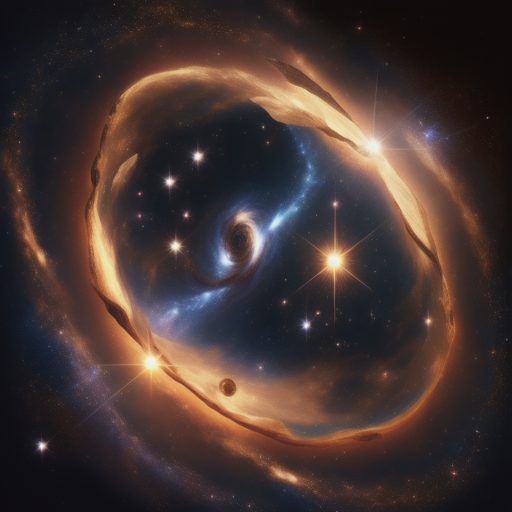
Galaxy’s ancient stars say, ‘Hello!’
Recommended for Preparatory Grades
Guess what? Scientists have found incredibly old stars right in the center of our own galaxy, the Milky Way! These stars are so ancient that they were born during the Cosmic Dawn, when the Universe was just beginning.
The astronomers, led by a clever person named Anke Arentsen from the University of Cambridge, have been working hard to uncover these hidden treasures.
Ancient Treasures: Unveiling Milky Way’s Oldest Stars!
- To figure out how old a star is, scientists look at how much metal it contains. When the very first stars formed, they were made mostly of hydrogen and helium. But as these stars burned bright, they started creating heavier elements like iron. When these stars exploded, they spread these heavy elements into space. Younger stars then formed with more metal, while older stars have less metal.
- Finding these ancient stars is not an easy task. They are like sneaky little stars, hiding in the galactic center. This area is filled with lots of metal, making it tricky to spot the old stars. Plus, there’s dusty stuff blocking our view, just like a curtain drawn in front of a stage.
- The scientists launched a special project called the Pristine Inner Galaxy Survey (PIGS) to search for these elusive stars. They examined the light emitted by the stars and looked for specific patterns that indicate low levels of metal. Their efforts paid off as they discovered around 8,000 star candidates that fit the bill. After careful confirmation, they identified about 1,300 ancient stars right in the heart of our galaxy.
- What’s even more fascinating is that these ancient stars move at a leisurely pace around the galactic center, despite the chaos surrounding them. It seems they have settled into a calm routine while everything else zooms around in a frenzy. Although their orbits can sometimes be wild and unpredictable, these old stars prefer to stay close to home, never venturing too far from the galactic center.
- Astronomer Anke Arentsen is absolutely thrilled by this discovery. She says that these stars formed less than a billion years after the Big Bang, making them true relics from the early days of the Universe. She and her team are eagerly collecting more information about these ancient stars, and they can’t wait to learn even more amazing things about them in the coming years.
- So, keep an eye on the sky and stay tuned for more exciting updates about these incredible stars from our very own galaxy, the Milky Way!
Similar Stories
Curious Times is a leading newspaper and website for kids. We publish daily global news aligned to your learning levels (also as per NEP 2020): Foundational, Preparatory (Primary), Middle and Senior. So, check out the News tab for this. We bring kids’ favourite Curious Times Weekly newspaper every weekend with top news, feature stories and kids’ contributions. Also, check out daily JokesPoke, Tongue Twisters, Word of the Day and Quote of the Day, kids need it all the time.
Curious Times News Program for Schools for FREE. Over 5,000 schools and teachers from all over the world have joined our programme so that students and teachers can get FREE Educative Newspaper. Here, kids can take part in world events and win prizes and certificates for free through their schools.
Moreover, schools are sharing important School News, like interviews with the principal, notices about new students, contests, and results, not just on social media but also on a news website for kids and other schools.
Thus, do not wait any further, sign-up for your school for FREE.
The following social media platforms allow you to communicate with us: WhatsApp, Instagram, Facebook, Youtube, Twitter, and LinkedIn.
0 (Please login to give a Curious Clap to your friend.)
